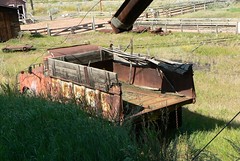
There's also the argument of carbon emissions associated with coal power. Solar power is already competitive with coal even before these realizations will begin to drive up the cost of coal. Solar Power anyone?
Investment Opportunities in India's Coal Mining Sector
Coal mining was brought under the public sector between 1971- 1973 with the passing of the Coal Mines (Nationalisation) Act, 1973. Nationalisation was done in 2 phases; the first with coking coal mines (by The Coking Coal Mines (Nationalisation) Act, 1972, under which coking coal mines and coke oven plants other than those with the Tata Iron & Steel Company Limited and Indian Iron & Steel Company Limited, were nationalised in May, 1972) and then with non-coking coal mines in 1973, with the enactment of the Coal Mines (Nationalisation) Act, 1973 (hereafter the "1973 Act"), which continues to be the Central legislation determining the eligibility of coal mining in India.
India's Coal Reserves
Coal India Limited
The Coal Mines Authority Ltd. ("CMAL") was set up in 1973 to operate the nationalised non-coking coal mines. Coal gasification and coal liquefaction have also been notified as specified end uses.
In March 1996, the Central Government allowed captive mining of coal for production of cement. The restriction of captive mining does not apply to state-owned coal mineral development undertakings. Commercial coal sales can legally only be undertaken by and through public sector coal companies (and their subsidiaries) and coal produced from captive mines by the private sector cannot be sold on the open market.
Setting up coal processing plantslike washeries subject to thecondition that the Indian company will notundertake coal mining and will not sellwashed coal or sized coal from itscoal processing plants in the openmarket. In addition, the Indian company will supply the washedor sized coal to those entities who aresupplying raw coal to coal processing plants for washing or sizing.
Allocation of Coal Blocks
Under the existing provisions of the 1973 Act, coal blocks for captive mining are allocated to public/private companies engaged inmanufacture of iron and steel, generation of power, coal washery and production of cement. As on December 31, 2009, the Ministry of Coal has effectively allocated 208 coal blocks, of which 84 coal blocks have been allocated to the power sector.
Further, acompany(ies) engaged in any of the approved end-uses can mine coal from a captive block through an associated coal company formed with the sole objective of mining coal and supplying the coal on exclusive basis from the captive coal block to the end-user company(ies), provided the end-user company(ies) has at least 26% equity ownership in the associated coal company at all times. In addition, there can be a holding company with two subsidiaries, i.e., (i) a company engaged in any of the approved end-uses, and (ii) an associated coal company formed with the sole objective of mining coal and supplying the coal on exclusive basis from the captive coal block to the end-user company, provided the holding company has at least 26% equity ownership in both the end-user company and the associated coal company.
Mining lease
State Governments can grant coal mining leases only with the previous approval of the Central Government. Before the approval of the Central Government is accorded, the allocatee mining company is required to get its mining plan for the proposed coal mining area approved from the Central Government. Coal mining leases are ordinarily subject to a ceiling of 10 sq. kms.